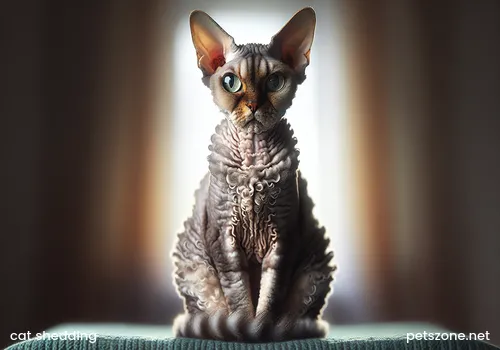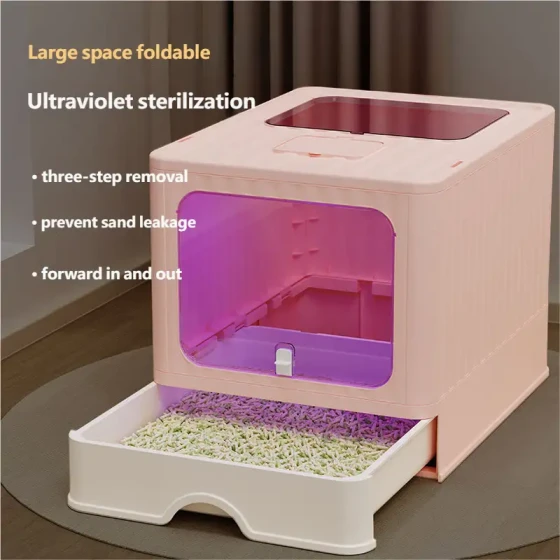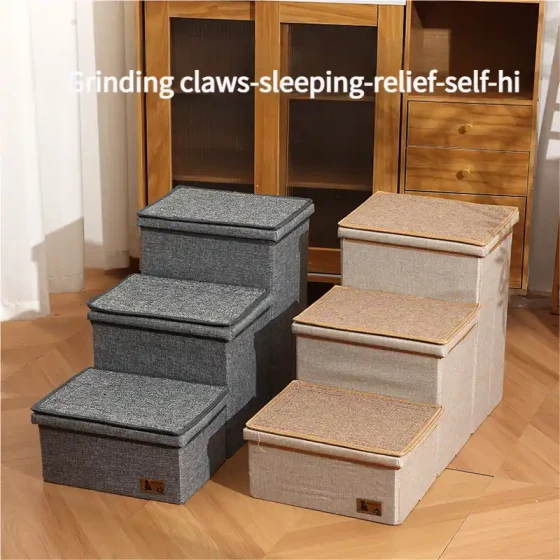When Do Cats Shed_Helping Reveal the Causes of Cat Shedding and Effective Solutions
Cat shedding is an unavoidable topic for pet owners, especially during certain seasons when cat hair flying everywhere at home becomes a daily scene. In most cases, cat shedding is a completely normal and healthy physiological process aimed at removing old and damaged hair while secreting the natural oils needed by the skin. However, if a cat suddenly shows heavy shedding or other symptoms such as abnormal skin, it may need attention as it could be a sign of some health issues.
Why Do Cats Shed?

The reasons for cat shedding are diverse; understanding these reasons can help us better care for our beloved cats:
- Seasonal Molting: This is the most common and normal cause of shedding. Cats adjust the density of their coats based on seasonal changes to adapt to different temperatures. It is usually most obvious in spring and autumn. In spring, they shed their thick winter coat and grow a lighter summer coat to prepare for the hot weather. In autumn, it is the opposite; they shed the light summer fur and grow a denser winter coat to resist the cold. This molting process generally lasts 6 to 8 weeks.
- Breed Differences: Shedding varies greatly between different cat breeds. Generally, cats with double-layered coats, such as Maine Coons, Ragdolls, and Norwegian Forest Cats, shed more than those with single-layer coats because they need to shed the thicker undercoat. Short-haired cats, though having shorter hair, also shed, and some short-haired cats shed as much as long-haired cats.
- Indoor vs Outdoor Environment: The living environment also affects a cat's shedding cycle. Cats living long-term indoors in a temperature-controlled environment may have less obvious seasonal shedding and could shed all year round. Outdoor cats, more sensitive to natural temperature and daylight changes, have shedding patterns that correlate more strongly with seasons.
- Aging: Just like humans lose hair as they age, older cats have slower metabolism and may lose hair more easily. Senior cats may also have reduced grooming ability due to arthritis or other issues, leading to hair accumulation and shedding.
- Malnutrition: If a cat's diet lacks key nutrients like protein and unsaturated fatty acids (especially Omega-3 and Omega-6), the hair becomes dry, brittle, dull, and prone to breakage and shedding. Ensuring cats eat high-quality, nutritionally balanced food is very important.
- Stress and Anxiety: Cats are sensitive animals. Environmental changes, new members in the household, boredom, or lack of security can cause stress or anxiety. In such cases, some cats over-groom to relieve emotional tension, which results in localized thinning or bald patches, known as psychogenic alopecia.
- Parasite Infestation: External parasites like fleas and mites cause itching and allergic dermatitis, leading cats to scratch and lick frequently, causing hair loss. Internal parasites can also cause malnutrition and shedding.
- Skin Infections: Fungal infections, such as ringworm, are common causes of shedding. Infected areas usually appear as circular or irregular hairless patches accompanied by dandruff and fragile hair roots. Other bacterial or fungal infections may also cause skin problems and hair loss.
- Endocrine Disorders or Underlying Diseases: Hormonal imbalances (such as hyperthyroidism or hypothyroidism), adrenal cortex hyperfunction, renal, liver diseases, and some cancers may cause heavy or abnormal shedding. This kind of shedding is often asymmetrical and may not involve itching.
- Allergies: Besides flea allergies, cats may be allergic to certain foods or environmental substances such as pollen, dust mites, or specific food ingredients, leading to itchy skin and shedding.
- Special Physiological Periods: Female cats during pregnancy or lactation may experience increased shedding due to hormonal changes, especially on the abdomen. Kittens undergo their first molting around 4 to 6 months old, replacing their baby fur with adult hair.
How to Deal with Cat Shedding?
Although normal shedding is unavoidable, we can take measures to reduce the “presence” of cat hair in the home and help cats maintain healthy fur. As the saying goes, “There are no cats that don’t shed, only owners who want to slack off.” While exaggerated, it emphasizes the importance of daily care.
- Regular Brushing: This is the most direct and effective method. Spend a few minutes daily brushing your cat, especially during shedding seasons, to remove loose hair still clinging to the body, reducing the chance of hair drifting in the air or settling on furniture. Brushing also promotes blood circulation in the skin, aids sebaceous glands in secreting natural oils, making hair healthier and shinier, and reduces hairball formation. Choosing a comb suitable for your cat’s hair type (long or short, double or single coat) is important.
- Adjust Diet and Ensure Balanced Nutrition: Feed your cat high-quality, nutritionally complete food rich in premium protein, Omega-3 and Omega-6 fatty acids, vitamin A, E, and other nutrients critical for fur health. With your veterinarian’s advice, supplementing fish oil or lecithin-containing products can help improve dry fur and reduce shedding, making your cat’s coat silky. Also, avoid feeding overly salty food, which burdens the kidneys and leads to shedding.
- Regular Bathing: Proper bathing helps remove dead hair and dirt, but avoid excessive frequency to prevent washing away skin’s natural protective oils, which could cause dry skin or skin diseases. Use mild, cat-specific shampoos and rinse thoroughly.
- Create a Comfortable, Stress-Reducing Environment: Minimize stress factors like loud noises or frequent strangers. Provide safe, quiet resting spaces, spend time playing and interacting with your cat to ease anxiety. Sometimes, a cat tree or a private little den gives cats security; shedding tends to be concentrated in these areas, making cleanup easier.
- Regular Deworming: Both internal and external parasites affect cats’ health and cause shedding. Following your vet’s advice to deworm regularly is very important.
- Keep the Environment Clean: Clean regularly using vacuum cleaners (especially with pet hair attachments), lint rollers, and other tools to promptly pick up cat hair from floors, sofas, and beds. Air purifiers also help capture airborne cat hair and dander.
- Regular Check-ups: If your cat shows abnormal heavy shedding, skin swelling, increased dandruff, bald patches, lethargy, or appetite loss, see the vet promptly. The vet can diagnose whether the shedding is due to nutrition, skin disease, parasites, or other hidden illnesses and prescribe appropriate treatment. Early detection and treatment prevent worsening, reducing discomfort and vet costs.
Special Reminder: Never shave your cat just to reduce shedding. A cat’s fur protects its skin; shaving damages the skin’s natural barrier and increases infection risk. Some cats’ hair takes a very long time to regrow after shaving.
Frequently Asked Questions
- When do cats shed the most?
Generally, cats shed most heavily in spring (around March to May) and autumn (around September to November) during molting seasons to adapt to temperature changes. - Do kittens shed? When do they start shedding?
Kittens do shed. Around 4 to 6 months old, they begin replacing their baby fur with mature adult hair. The process can last several months. - Do indoor cats not shed?
No, indoor cats also shed. Although they don’t experience obvious light and temperature changes like outdoor cats, seasonal molting may be less distinct, but indoor cats may shed continuously year-round due to living in a stable environment. - Besides seasonal molting, what other causes lead to cat shedding?
Besides seasonal molting, malnutrition, stress, parasite infection, skin diseases, allergies, endocrine disorders, and other underlying illnesses can cause shedding. - How to determine if cat shedding is normal?
Normal shedding is usually even, with hair looking healthy and shiny overall. If shedding suddenly increases, accompanied by bald patches, skin swelling, more dandruff, itching, dry and brittle hair, or changes in spirit and appetite, it may be abnormal shedding requiring prompt vet attention.
In summary, cat shedding is completely normal. As pet owners, understanding the causes and adopting scientific care methods such as regular brushing, balanced nutrition, and maintaining a clean, comfortable environment allows our “fur babies” to have healthy coats and keeps our homes tidy. If abnormal shedding or other health issues appear, seeking veterinary help promptly is the best responsibility we can take for our beloved cats.



